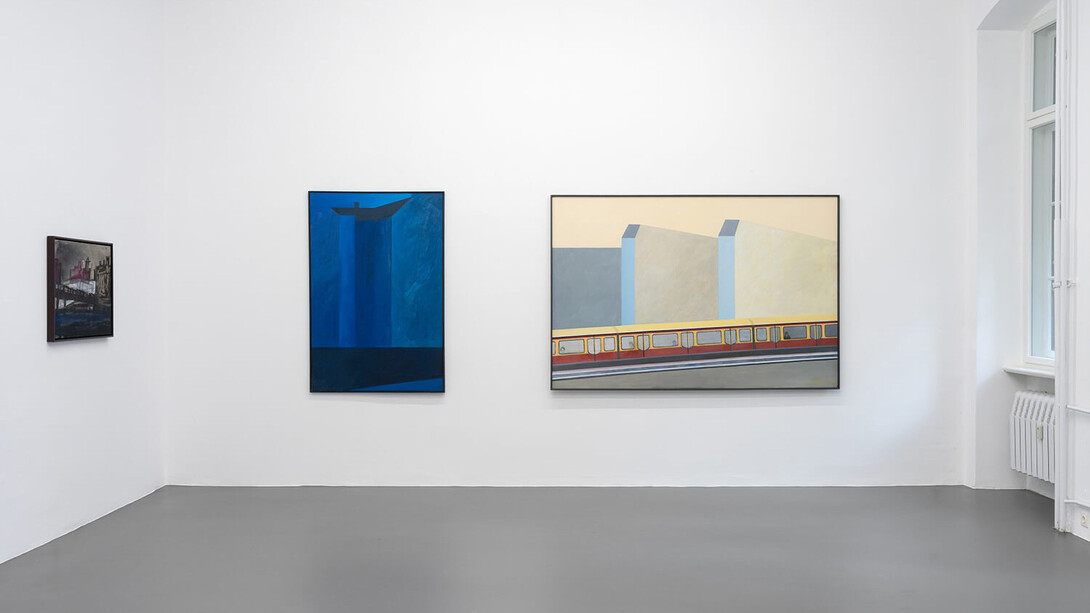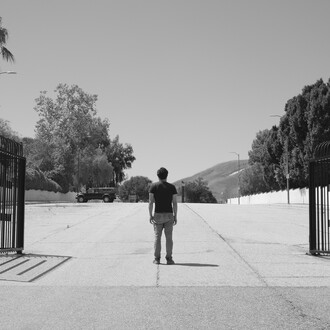Unlike veduta painting – where the goal was to render city views with the highest degree of accuracy – contemporary art treats the city as a source of inspiration for individual perception. The exhibition Cityscapes brings five distinct artistic voices into conversation. Through dense composition or deliberate omission, each artist creates moods that go beyond simply depicting the city.
Jan Schüler’s meticulous paintings reduce the urban scenes he photographs to their fundamental elements. Details are left out between smooth surfaces and sharply delineated forms and colour fields. Stylised poles, fences, trees, and clouds accentuate the character of each scene. This process of reduction keeps his cityscapes recognisable by location: Berlin’s Tempelhof Airport, the Nazi Party Rally Grounds in Nuremberg, or a lock in Gießen.
Sarah Haffner developed, for her compositions marked by distinct forms and a striking palette, a hybrid technique of oil paint and egg tempera. In her work, colour carries its own weight: it is not applied to reflect nature, but used expressively, and with spatial presence. Colour carries emotion; for Sarah Haffner, blue and blue-green are mirrors of the soul, emblems of melancholy. Her abstracted urban landscapes – faceless apartment buildings and firewalls across seasons and times of day – or her commuter train scenes are shaped by the city she called home for decades: Berlin.
Franziskus Wendels has spent over thirty years examining how artificial light behaves in darkness. In many of his image series, the city is central: its lights during a plane’s nighttime landing, or the glow of signs above cinemas and petrol stations. These nearly black, monochrome paintings – where no brushstrokes remain – are illuminated by colour in endlessly shifting hues. Their glow is achieved through a unique technique Wendels has refined over time, blending oil and lacquer and dissolving pigments. A final glaze, tinted in subtly varying tones, gives the light its flickering effect.
G. L. Gabriel conveys the fleeting atmosphere of the city through stylistic and painterly devices, applied with a bold, expressive stroke. She applies this approach equally to a monumental four-metre canvas of the Glienicke Bridge and a smaller painting of New York, where cast-iron fire escapes and rooftop water tanks conjure the city’s distinctive local flair.
Eric Keller builds his urban cosmos from casual glimpses – riverside walkways, athletic fields, parking lots, and railway crossings. His motifs are composed of large areas of colour, built up tone on tone from thin layers of oil glaze in various shades of grey, blue, violet, or ochre. The slight blurring he applies creates evocative spaces of memory. Working on the painting, he returns in his imagination to scenes he observed, but their exact location remains his secret.
In this exhibition, the city appears not as an architectural construct, but as an atmospheric space – a surface onto which melancholy, longing, and memory are projected through the subjective gaze of the five artists.















